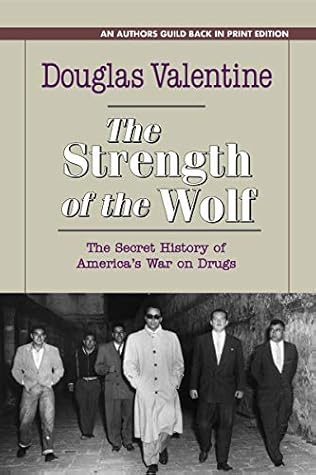Kindle Notes & Highlights
By the mid-1920s he was in sole control of the lucrative black market in heroin, morphine, opium, and cocaine, and had set up a sophisticated system of political payoffs, extortion, and collusion with the same gangsters who would eventually kill him and divvy up the spoils of his vast underworld empire.
first and foremost, politicians had discovered that the war on drugs could be exploited for promotional purposes; and secondly, the immensity of America’s drug habit had become a public issue that demanded immediate attention.
The Ezra brothers, Judah and Isaac, had a different pedigree and modus operandi. Their father had dominated the legitimate opium business in Shanghai prior to the First World War, and according to scholar Terry Parssinen, “once headed the city’s powerful Opium Combine.”7 Unlike the Eliopoulos brothers, the Ezras had a huge stockpile of opium and were making large profits in 1912, when the Hague Convention made it illegal to import opium from India into China.
The Ezras had established their contacts prior to the Hague Convention, at a time when the Astors and relatives of the Roosevelts (Russell and Company in Boston) had increased their family fortunes by shipping opium from Turkey, Iran, and India to China.
Great Britain in particular had relied on the opium trade to support its colonial empire since the eighteenth century.
As it was in the beginning, it is now and ever shall be: national security interests superseded those of the drug law enforcement agencies of the US government.
Anslinger took charge of the Bureau of Narcotics in September 1930, at the age of thirty-eight. He was given a broad international mandate to pursue, at their sources, the drug smuggling rings that had proliferated in the 1920s. He was also told to work with state and local narcotic bureaus to disrupt interstate trafficking and eliminate corruption. As the record shows, Anslinger performed his job with flair. For thirty-two years, until his retirement in 1962, his personality, policies, and appointments defined both the Narcotics Bureau and the nation’s war on drugs.
The story of these case-making agents is at the heart of the tragedy of the Bureau of Narcotics – and America’s fatally flawed war on drugs. For in the course of bringing down one predatory drug trafficker after another, these superlative agents were perpetually on the verge of uncovering the underworld’s clandestine relationship with America’s Establishment, that “exclusive group of powerful people who rule a government or society by means of private agreements and decisions.”1
Harry Anslinger was an imposing figure, husky and nearly six feet tall, with an intimidating stare, an imperious air, and a flair for self-promotion. But first and foremost he was a patriot with a deep and abiding commitment to the security of America’s ruling elite. As an apparatchik of corporate America, he faithfully subordinated federal drug law enforcement to the Establishment’s national security interests and, when necessary, concealed the government’s involvement with foreign nations that profited from trafficking in illegal narcotics.
At the time, Anslinger’s job was in jeopardy too, so borrowing from Madison Avenue and creating a need that could never be fulfilled, he launched his infamous “Reefer Madness” crusade to rid America of marijuana.
A new class of criminal was created, as was the “stepping-stone” myth that smoking marijuana led to heroin addiction.
Then on 12 November 1941, Reles (“the canary who couldn’t fly”) took a fatal fall from the sixth floor window of the Half Moon Hotel in Coney Island while under the protection of six policemen – all of whom had fallen asleep simultaneously.
Helbrant soon discovered that Coindet was planning to use his drug-smuggling profits to help Honduran opposition leader Jose Maria Guillen Velez finance a rebellion in Honduras, where the collapse of the banana economy had prompted President Tiburcino Carias Andino (the man Guillen hoped to topple) to resort to drug smuggling too.
Along with the Opium Scandal of 1927 and the Kao case of 1929, the TACA case proves that the government protected drug smugglers to ensure national security, as well as to protect corporate profits. It also highlights the sad fact that case-making agents like Helbrant were aware of such machinations, but were unable to stop them. Anslinger went along with this unstated policy for two reasons: he needed drug addicts to justify his Bureau’s existence and, by allowing certain politically acceptable drug rings to exist, he became a key player in the espionage Establishment.
On the contrary, the FBN assumed a collateral role in narcotics-related espionage activities that was antithetical to its mandate.
Putting a famous face on the drug problem highlighted the increasing availability of heroin and, as a bonus, by linking marijuana to surges in juvenile delinquency, homosexuality, interracial sex, and other signs of social decay brought about by liberalism, Anslinger bolstered the need for a punitive approach to drug abuse, thus satisfying his conservative core of supporters in Congress while, at the same time, reinforcing the urgent need for his organization.


